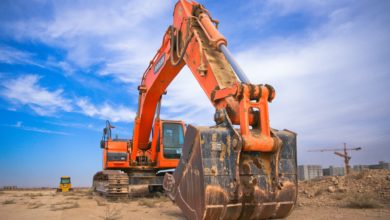America’s Railroads Are in Trouble–With or Without a Strike

A potential strike of tens of thousands of workers on America’s railroads is causing panic among everyone from online shoppers to grain operators who are hoping to avoid the supply chain headaches of the last two years. Amtrak stated that all cross-country trains will be cancelled starting on Thursday September 15, as many trains use tracks maintained by freight railroads.
However, the bigger question is whether 12,000 employees will strike Friday. Even if the strike is avoided, railroad customers, which include farmers and energy producers, say the industry requires a complete overhaul.
The pandemic saw a combination of a surge in consumer demand and lockdowns, which created supply chains bottlenecks. This made it more difficult for customers to obtain everything from garage doors to tampons. The pandemic has caused more problems for the railroad than trucking companies and shipping firms have experienced. According to the American Chemistry Council’s members, who transport everything from ethanol, sulfuric acid and other chemicals by rail, 46% reported that rail delays had increased and that services were more difficult since the beginning of 2021. Only 7% of those surveyed said they had seen improvements in service. Nearly 60% of respondents said they have been charged higher rates.
Continue reading: The Truck Driver Shortage Doesn’t Exist. Driving conditions are worse when there is one.
“Railroads recognize that their service over the past year has not been at a level their customers deserve and expect,” said Ian A. Jeffries, the president and CEO of the Association of American Railroads, in a statement prepared for a Congressional hearing Sept. 15 on rail service challenges and their impact on agriculture.
In April, the problem became so desperate that the Surface Transportation Board held a public hearing on “urgent issues” in freight rail service, saying that it was getting reports “from a broad range of stakeholders about inconsistent and unreliable rail service.” It asked them to provide information about their plans to fix these problems. Then, after it determined that their plans were not sufficient, the board ordered the four biggest railroads—BNSF Railway Company (BNSF), CSX Transportation, Inc. (CSX), Norfolk Southern Railway (NSR), and Union Pacific Railroad (UP)— to develop service recovery plans and provide monthly information about their progress. “We are in the middle of a rail service crisis and the Board continues to receive reports about persistent, acute, and dramatic problems in rail transportation, disrupting critical supply chains and shutting down companies,” board chair Martin Oberman said in a statement at the time.
Without major improvements in rail service, more companies will decide to move goods by truck instead of freight rail, says Adriene Bailey, a partner at research firm Oliver Wyman’s Transportation practice. This could lead to increased congestion and greater road damage. Because rail can be used to transport goods over long distances at a lower cost, it could result in higher prices. Not to mention the fact that major railway companies might lose more market share if they have to derail tracks, cut back employees and reduce their network.

Amtrak trains can be seen at Union Station, Washington, D.C., Friday, August 19, 2022.
Tom Williams/CQ-Roll Call, Inc— Getty Images
The potential strike “is a really big deal in the short term, it’s dominating the conversation, but it’s not the big issue in the long term,” says Tony Hatch, a rail and intermodal analyst who consults with Wall Street. “The biggest issue is: are railroads going to get their service act together?”
Even if this labor dispute is not involved, here are the top problems railways face:
Railroads can’t get the staff
Working for the railroad sounds like an attractive job. Workers don’t need a college degree, and the average total compensation for rail employees is $160,000, according to the Association of American Railroads.
However, workers claim that these past two years were very difficult. That’s in part because of the pandemic, but also because the major railroads have for years been making major staffing cuts that have forced employees to take on more work.
Oberman’s testimony to Congress shows that Class 1 railroads saw a 29% reduction in their workforce over the past six years. This includes 45,000 workers. Bailey says that while some of these changes were due to administrative personnel, others were done in an effort to achieve the efficiency desired by investors. Bailey also states that there were some cuts made at the outbreak of the pandemic.
Railways are now doing their best to find new workers. In his statement, ARR’s Jeffries says railroads’ recruitment efforts may be starting to bear fruit. After offering thousands of dollars in signing bonuses and incentives to workers to relocate to regions experiencing demand, employment among Class I railroads—the biggest companies—was up 4.2% between February and July of this year, he says.
Learn More: The Great Tampon Shortage of 2022: The Supply Chain Problem No One’s Talking About
Still, Bailey worries that people don’t want to do the type of physical work that requires them to be away from home for long periods of time, or live somewhere far from family or friends, she says. Many workers that start railroads’ training programs don’t make it to the end, she says. “There’s this shift in worker mentality that is getting brought to bear in this labor crunch that the railroads are trying to resolve for themselves.”
The result is a vicious cycle. With fewer employees those who remain must work more shifts in order to keep the railway operating during peak hours. A Union Pacific conductor told The Post recently Freight Waves that workers “are dropping like flies,” in part because shifts that used to be eight or nine hours are now up to 19 hours.
Some unions representing railroad workers say that the sticking point in the current negotiations—whether workers can take sick days or unscheduled time off—is making it even harder to attract new workers. “These employment policies have forced thousands of employees out of the industry and make it all but impossible to recruit new workers,” said Jeremy Ferguson, president of the SMART Transportation Division, one of the last holdouts in the negotiations, in a statement on Sept. 11.
The entire railway is affected by regional problems
Many industries in the U.S. have staffing issues, but railroads are more affected. Walmart should have sufficient workers along the coastlines to solve the problem, while not having enough staff in the middle. A railroad with a significant staffing gap in the middle will delay service to both the east and west coasts because they are connected networks.
This isn’t just a staffing problem. Throughout the pandemic, containers sent inland ended up stuck there because it wasn’t cost effective to send them back empty and because there wasn’t the equipment to move them. Some containers are still stuck there, because warehouses are full and there’s not enough workers or equipment to move the containers, which causes bottlenecks across the country, Bailey says.
“If I have two or three areas of my network where I cannot get the people, I can have 10,020 employees but the system has still gotten disjointed and congested and the cars aren’t flowing,” Bailey says. It’s one of the downsides of trying to use a system that was created when the biggest competition was horses to underpin modern commerce.
Shippers prefer trucks
Before the pandemic, railways had lost market share to trucksing businesses. Bailey states that trucking is growing faster than railroads as North America’s freight market grows. That’s because many companies that move goods say they’ve had bad experiences moving goods by rail.
Bailey and Oliver Wyman conducted an online survey to find that truck freight was preferred over rail. Trucks were more likely to be on time, executives said, and when they weren’t, companies would call and tell them where their goods were and when they’d arrive. By contrast, railroads often couldn’t give very much information about where companies’ containers were and why there was a delay.
“Even before COVID, the level we were running at was not sufficient to build success and growth for the industry going forward,” Bailey says. “The railroads need to fundamentally evolve and improve the operating model.”
Learn More: Why It’s So Hard to Find Baby Formula in the U.S. Right Now
Railroad CEOs have talked about making big investments in their network and spending money so that they’ll be able to gain market share in the long-term, she says. But investors haven’t been as supportive. Bailey says investors are more focused on short term profits than operating margins during earnings calls. That is, how much the railroad earns per dollar sold.
“We have to set our sights on running a highly reliable, predictive scheduled network that will deliver the kind of service performance that shippers need,” Bailey says. “I’m a big believer that we can get there. But so far, the industry has not proven its ability to get that done.”
Technology upgrades were delayed
For all of America’s obsession over autonomous cars and trucks, most people haven’t given a lot of thought to autonomous trains, even though they would run on rails instead of public roads, arguably making them a much safer option. Hatch says that there are many technology that can make railways more efficient. They may not be implemented due to regulations.
The government ordered that nearly all trains be equipped with Positive Train Control (PTC) after the 2008 fatal train crash in Chatsworth. This was due to the fact that a Train Engineer who was texting at the time caused the collision. All required trains have installed Positive Train Control (PTC) as of December 29, 2020. This software overrides operators and allows trains to slow down or stop if they are traveling too fast. The railroad operators argue that PTC is better suited for trains with one-person crews than those with two.
Although the Federal Railroad Administration stated in 2009 there wasn’t enough evidence to prohibit one-person crews from operating, that same agency proposed in July 2022 a rule mandating at least two crewmembers on most trains. Rail companies claim that there’s no safety reason for it and the government should let railroads and labor unions decide the size of their train crews through collective bargaining. The Association of American Railroads claims that railroad crews have decreased from five to three to then two through collective bargaining.
Learn More: Are You Having a Hard Time Buying a Car or PlayStation 5? CHIPS Act may be able to help
Similar complaints have been made by train companies about automated rail inspection systems. Conductors must walk along the entire length of trains to check it. They also need to look underneath the cars. It can take quite a while to inspect freight trains that are more than one mile long. Automated Track Inspection is a technology that allows railroads the ability to inspect freight trains using cameras and lasers. Federal approval has been granted to various railroads for testing it at certain locations. The Federal Railroad Administration let some of these test programs expire. Although railroads appeal the decision, Hatch and other analysts worry that government interference will prevent railroads from obtaining the necessary technology to thrive. This technology may change the nature of railroad jobs, he says, but is necessary for the industry’s survival.
He says railroad companies “need to be allowed to take advantage of technological advancement.”
“Railroads need to be able to spend money on technology—which could be job reducing—but if the cost per train starts to go down, you can do a different kind of business.”
Read More From Time





